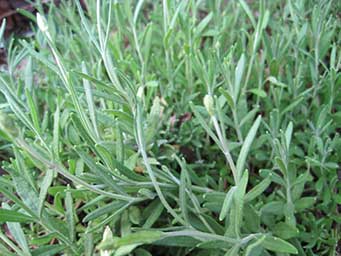How I made peace with the critters who were attacking my vegetable garden. How you can, too.

By STEPHANIE WHITTAKER
“You know this means war, don’t you?”
Until that moment when I stood fuming in my backyard strawberry patch, I had never in my life spoken to a marmot, let alone declared war on one. It was a feeble declaration of war at best, because the varmint—along with its entire varmint family—had already started the war . . by invading my vegetable garden.
I’d never seen a marmot in my West Island garden before the May planting weekend of 2021. But there they were: three babies and their rotund mama.
They were munching on weeds, undeterred by my presence. I was clearing the ground to plant cucumber seedlings, and decided to take a 10-minute break. I left the plants in their pots with the intention of returning to plant them. But when I returned, I was horrified to discover that every leaf had been nibbled off. The marmots, meanwhile, had fled the scene of the crime.
Two days later, I saw a particularly cheeky one in the strawberry patch. When I ordered it to clear off, it stared at me as if to say: “make me.” The chicken wire that surrounds the strawberry garden was no match for that rascal. As soon as I clapped my hands, it took off. That’s when I declared war.
The word in my ’hood is that these particular marmots were refugees from a nearby construction site. Turfed out of their homes by heavy equipment, they had no option but to move into our gardens.
In my world, critters are never harmed in wars. Rather, they are encouraged to vacate the premises. I researched ways of making my garden unpalatable and unwelcome to them in the hope that they’d take up residence elsewhere. For all you West Islanders who’ve been equally afflicted with unwelcome garden guests eating you out of house and home, here’s what I learned:
* Lavender
Perfume to us; vile stench to marmots. I bought nine lavender plants and put them into the ground around my vegetable patches, two of which are secured with chicken wire and bird mesh.


* Garlic
We love it; marmots hate it. I bought a dozen bulbs and puréed them in a food processor. I distributed the garlic paste on the ground around the compounds that contain broccoli, cucumbers and strawberries.
* Epsom salts
Strategically positioned in aluminum platters in the areas that I wanted to protect, Epsom salts smell awful to marmots. Caveat: it must be replenished after a rain.


* Human hair
The next time I have a haircut, I shall ask my stylist to send me home with a doggy bag of hair clippings. Groundhogs dislike the smell of hair, so positioned around the garden’s perimeter, it has the clout to keep them out.
* Soiled cat litter
Never have I been so grateful to my two cats for urinating. I piled samples of their soiled litter on the ground under our fence where I had observed the marmots entering the garden. Cat urine, it seems, smells like predators to marmots. They’ll never know that my cats—Snooki and Bob—are both scaredy-cats.
* And various herbs
Basil, lemon balm, mint, sage, thyme, oregano, rosemary and chives. I already have these in the garden but planted an extra patch of basil near the broccoli. Bonus: Bye-bye marmots; hello pesto all summer.

We eventually struck a truce, the marmots and I . . . an implicit understanding that I wouldn’t crawl into their burrow to disrupt their lives if they ceased their incursions into my space. And I’m happy to report that the battlements I created—with lavender, Epsom salts, cat litter and garlic—served as strong deterrents. The marmots deserted the ’hood and my garden was safeguarded from their thieving little paws.








